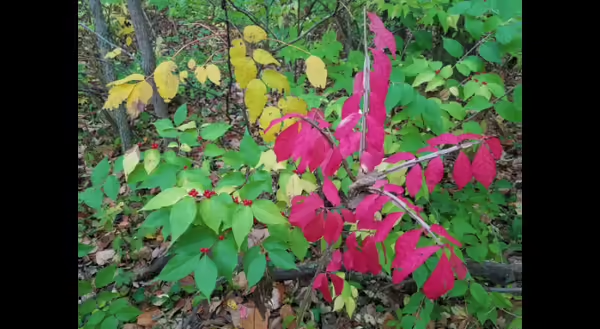
Fall color is upon us with so many plants entering their annual push toward winter dormancy and putting on a great display in the meantime. As deciduous plants show their true colors this time of year, it offers the observer an opportunity to quickly identify many species by the color and timing of their autumn display.
Phenology is the study of seasonal changes in plants. It is an incredibly useful tool for plant identification, but also helpful in building a greater understanding the natural world. Whether it’s the timing of annual flowers, the fall color of leaves or cyclical fruit production of many trees, observance of plant phenology helps us become more in tune with plant processes, making us all better gardeners and naturalists.
Phenological ques are a huge part of many plant management processes. In tree fruit production, swelling spring buds are a sign to initiate control of many early season fungal pathogens before new emerging foliage is infected. Ripening of fruit is another predictable phenological event that designates harvest time.
Fall leaf drop is also an important que since it identifies a transition into dormancy. This time of year, plants are shutting down and absorbing as much energy as possible from fading leaves. All this energy is transitioned to stem and roots that will store these reserves until spring. It is really important that plant stresses are limited to allow the maximum amount of energy recovery.
So, this time of year, it is critical that woody plants are allowed to complete the process of fall shutdown undisturbed. You would never want to prune a woody plant during fall since it risks disruption of the energy recovering processes at play. Pruning now removes these plant parts before the maximum amount of energy can be recovered from leaves prior to leaf drop. Save the pruning for later in winter when these plants are in full dormancy and pruning will have the least impact to plant health.
There are times when a plant management practice is designed to have the maximum negative impact on plant health and you might want to take action during this transition. A good example is making a cut-stump herbicide treatment on a woody invasive plant.
Cut-stump treatments are performed immediately after cutting down a woody plant. The herbicide is applied directly to the cut surface to be taken up and translocated to the roots where it kills the plant. Since woody plants are taking all the energy out of their leaves this time of year and sending a ton of it down to their roots for winter storage, it is an ideal time to apply an herbicide to a cut-stump. These plant processes aid in the translocation of herbicides to roots.
Conversely, spring is terrible time to apply an herbicide to a cut-stump. Plant processes are in the reverse of fall, where the plant is taking energy stored in its roots and pushing it up to stems to form new leaves. Herbicide treatments are often not as effective or entirely ineffective since to route down to roots is very difficult with overall movement of materials in the plant heading upward.
Right now is a prime time for control of two woody invasive species in central Illinois. Not only are physiological plant processes optimal, but identification is much easier in fall based on phenology. Currently, invasive burning bush (Euonymus alatus) is highly visible due to its bright red fall color, making it really easy to find. In the coming weeks, bush honeysuckle will begin to stick out like a sore thumb as native deciduous plants drop leaves. Bush honeysuckle (Lonicera spp.) remains green for another few weeks, creating an ideal window for easy identification and control with stump cut treatments. Don’t miss this great opportunity to maximize the use of plant phenology for invasive species control.
Learn more about Illinois invasive species.